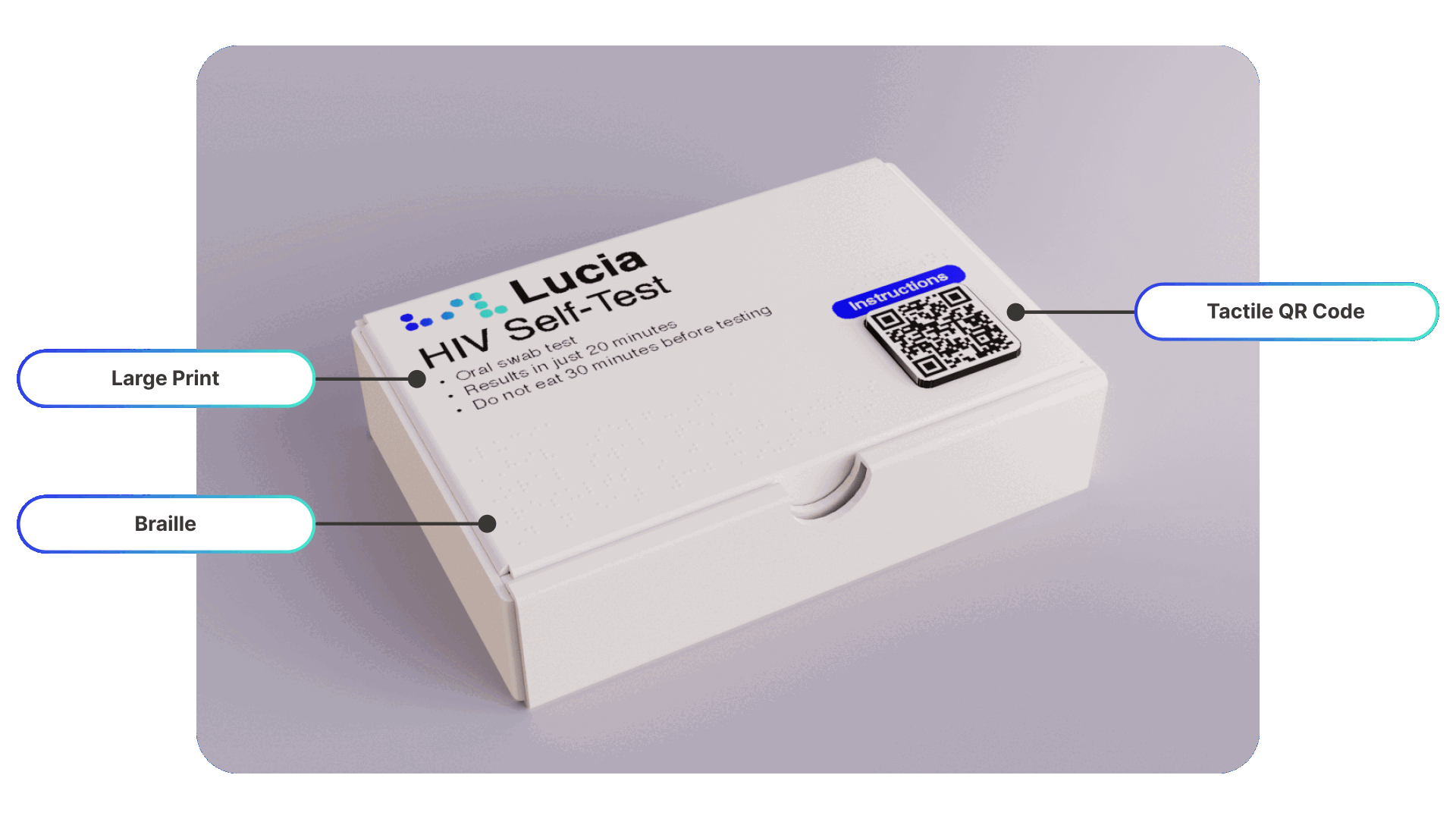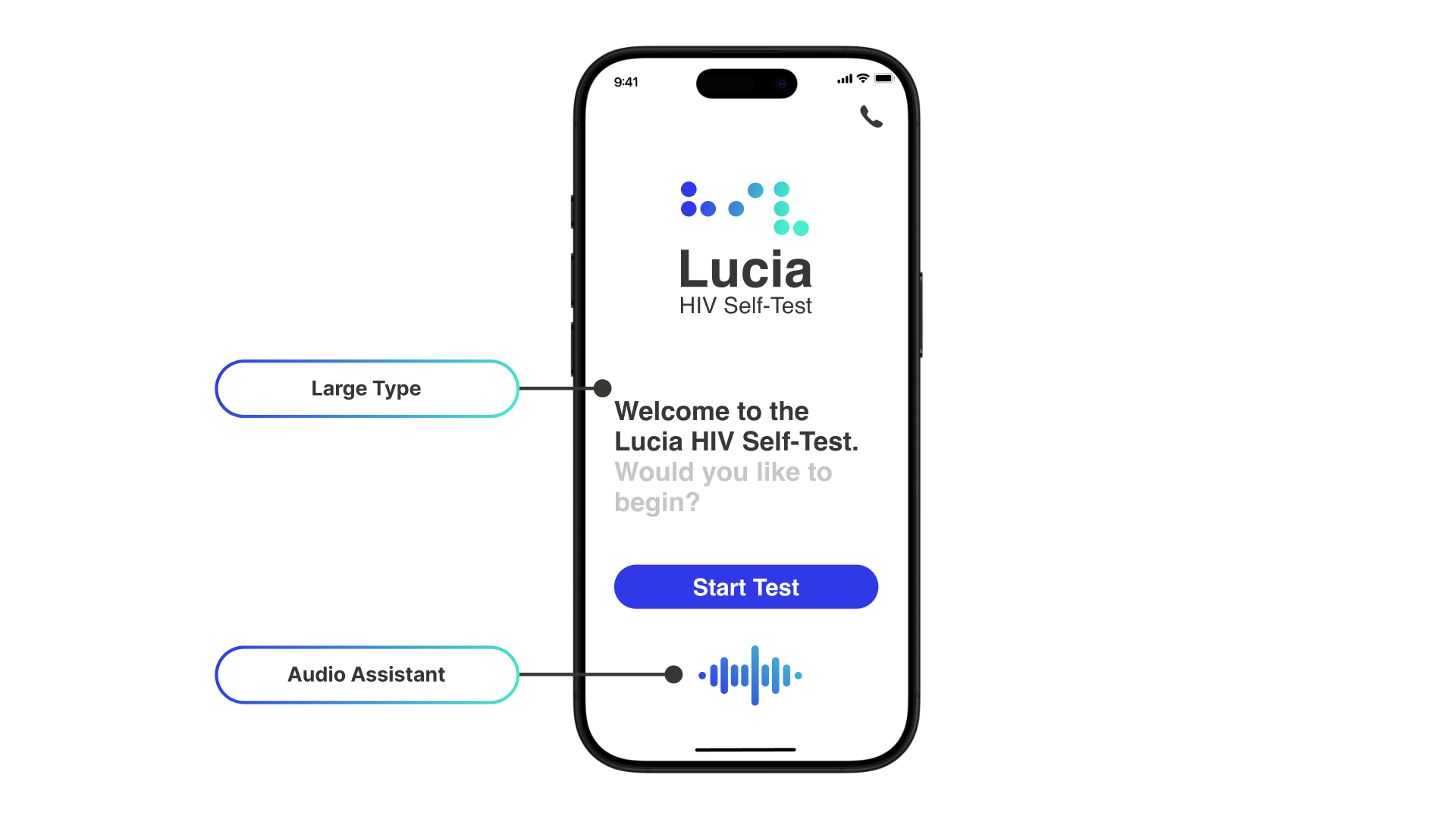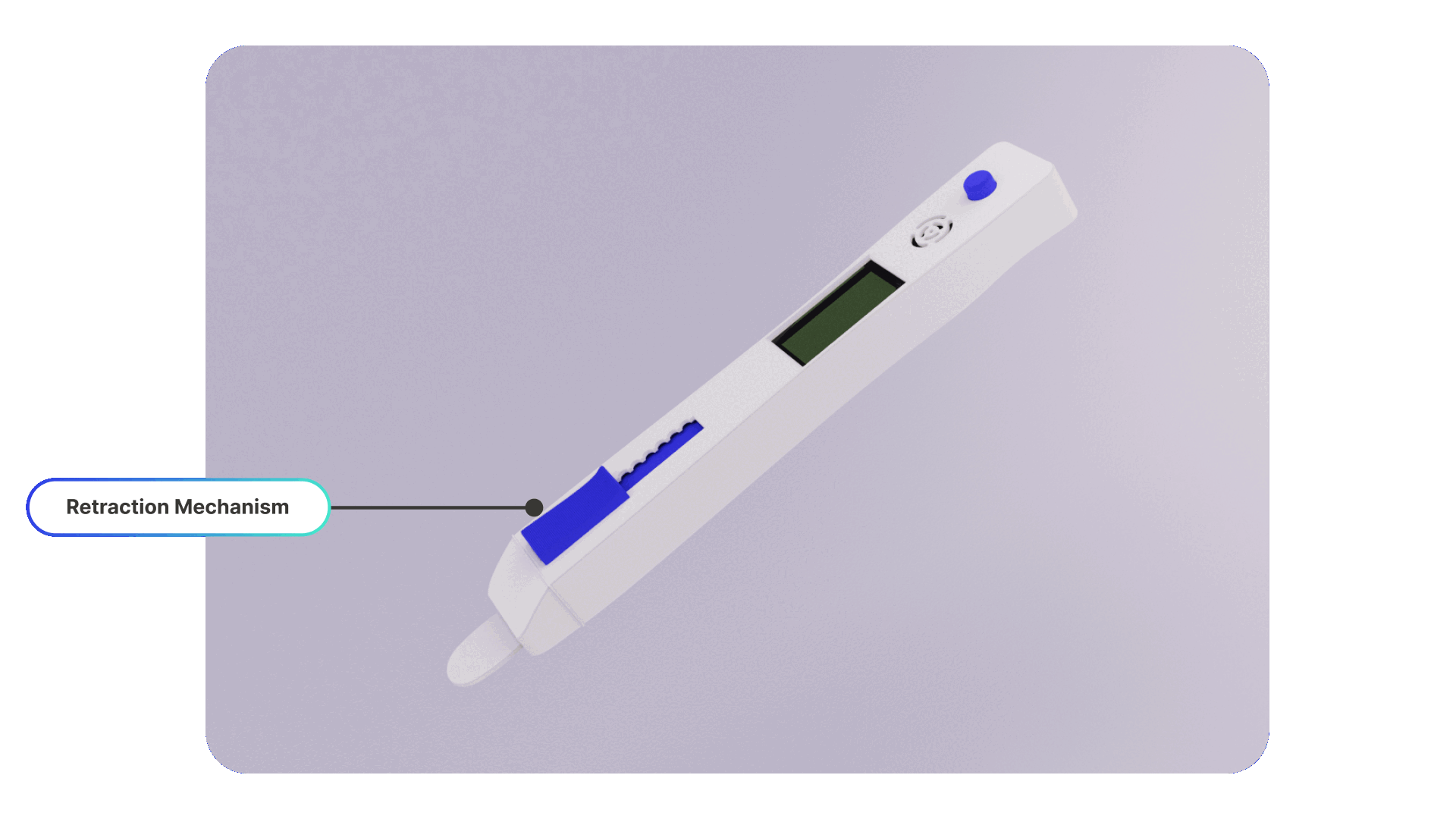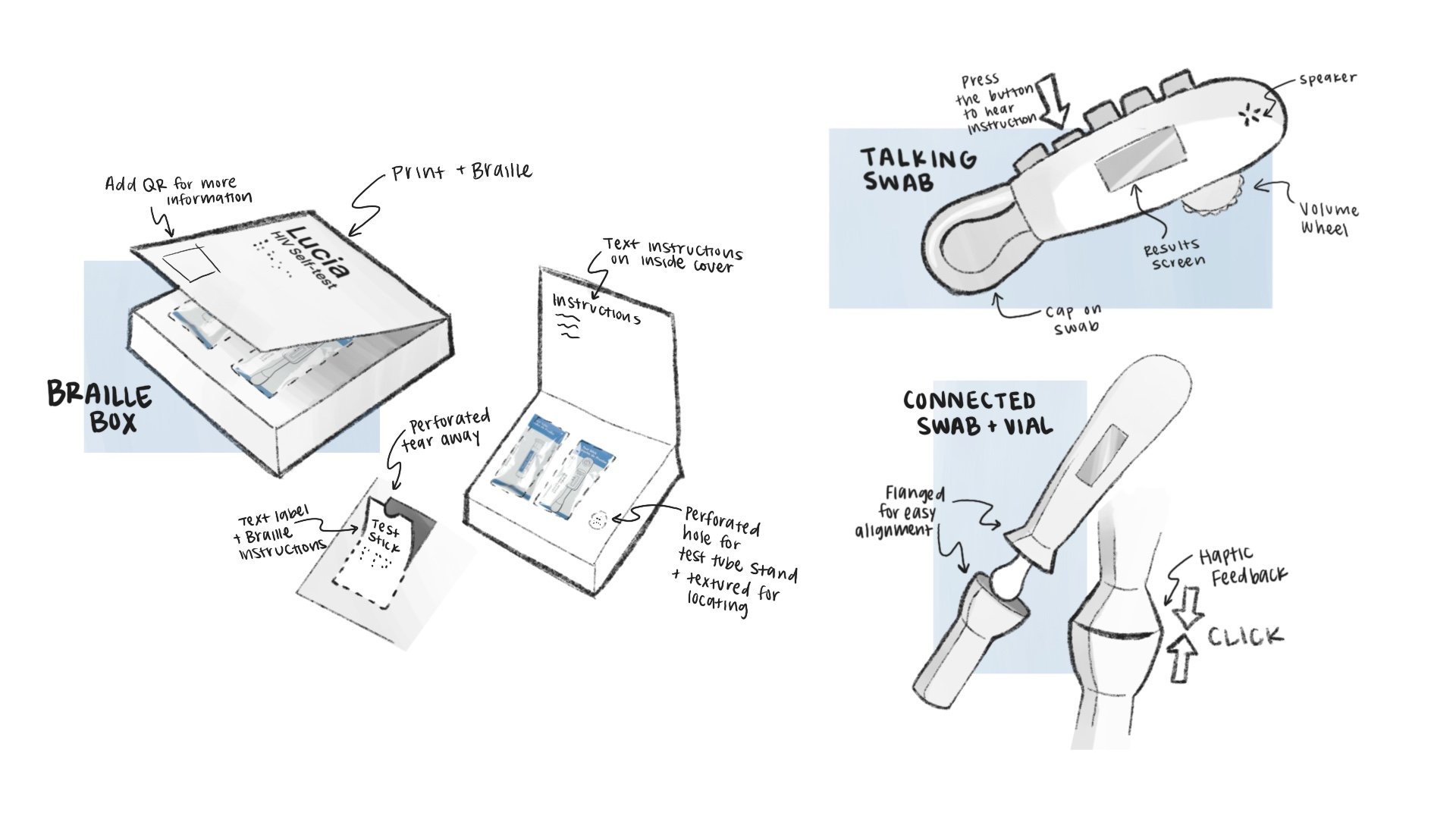Lucia
Overview
The prompt for this 12-week Senior Capstone project was to curate a self-directed project with chosen objectives.
Lucia is a multi-sensory HIV self-test kit that provides privacy and autonomy to the visually impaired.
Time
August 2024 - Novmeber 2024
Credits
Lisa Marks (Professor)
Skills
Interviews, Affinity Mapping, Fusion 360, KeyShot 2023, Figma, Procreate
HIV Self-Tests
HIV self-tests have given millions around the world an easy and private means for monitoring their own health status
But, they’re…
Not designed for the visually impaired
Millions of visually impaired users are forced to feel their way through the test with a vast majority not being able to read the test results in the end
Voices from the Visually Impaired Community
After speaking to over 15 members of the visually impaired community about their wants and experiences with inaccessible product design, here are what some of them said…
Design Criteria
Build a multi-sensory experience
Ensure the privacy of users
Enable personal autonomy
Lucia
Enabling access to HIV self-tests for the visually impaired
The packaging is printed with large text to improve visibility for those with low vision
and braille for those with complete blindness.
Additionally, there’s a tactile QR code that when scanned with a phone directs you to the instructional website
Packaging
Website
On the website, you are directed by an audio assistant and is paired with large type captions. The combination of the two provides a comforting voice guiding you through each step while maximizing comprehension
Each step will have an accompanying 2D illustration to visualize the steps
Test Tube
The test tube is designed with wide base to provide stability, a connected cap to eliminate small components, and a tactile arrow to indicate an upright position and where the cap is
Test Swab
The test swab is designed with a retraction mechanism, similar to a utility knife
Connection
After swabbing your mouth, you then place the swab into the test tube
The two have snap-fit joints for a secure hold and tactile feedback which provides sensory confirmation that connection is done correctly
Once connected, you extend the swab so that the tip makes contact with the testing fluid
Built-In Timer
The website will start a 20-minute timer as the test processes
The built-in timer improves ease of use as the user does not have to set their own time outside of the website.
Results Interpretation
To interpret the results, the swab provides two options. One is visual with an LCD like the one on a digital pregnancy test and the other is auditory with a button at the end of the swab that returns a series of beeps
1 beep for an invalid result, 2 for a positive results, and 4 for a negative
Post-Test Information
At the end of the test, you can choose to read more information on what each result means and recommended next steps

THE PROCESS
/
THE PROCESS /
Accessible Home Tests
Assembled by the NIH RADx Initiative, the Best Practices for the Design of Accessible COVID-19 Home Tests publicizes the findings of accessibility tests from different groups, including the Georgia Tech HomeLab, to accelerate the manufacturing of accessible COVID-19 home tests. This document acted as key literature to guide the ideation and user-testing phases.
Best Practices for the Design of Accessible COVID-19 Home Tests
Interviews
To get a wider understanding of accessible design and the daily experiences of visual impaired folk, I conducted interviews with 2 accessible design researchers, 3 visually impaired users, and participated in a local support group for the visually impaired.
Affinity Map
Insights
Following the interviews, I affinity mapped to group my findings and extract 3 key insights into how the visually impaired interact with accessible design.
Observations
Observation Analysis
To improve existing the design, it was necessary to observe and analyze the process of using an HIV self-test. From these observations, I found that the current OraQuick HIV Self-Test was highly visually with only 2 instances of non-visual feedback. Further, the test only offered printed instructions that were reviewed 6 times throughout the test.
Concept Ideation
Ideation started with an assessment of the 2 versions of the OraQuick HIV Self-Test to determine specific areas where the design can be improved. These improvements were then brought together in concept sketches.
User Testing
To further find areas of design improvements and to test current concepts, I conducted 4 user tests where each participant was asked to close their eyes and interact with both a low-fidelity prototype and existing test components. I tested packaging form, coordination when swabbing the gums, coordination when connecting the swab to the test tube, and the format of verbal instructions.
Key findings: (1) All participants touched the swab tip and contaminated their tests, (2) All participants needed the instructions to be repeated to them at least twice, (3) All participants needed to hold the swab close to the tip to help align the swab into the test tube, (4) All participants understood their test results which were given as a series of beeps
Model Exploration
The final model was based on existing structures of HIV self-tests and digital pregnancy tests along side simple mechanisms such as a button, buzzer, and slider. In doing so, Lucia’s design is feasible with current technologies and works with existing mental models to be easily understood and lower barriers to adoption.
Disassembled HIV Swab
Disassembled Digital Pregnancy Swab
Hybrid of HIV Swab with a Pregnancy Test PCB and Utility Knife Slider





























